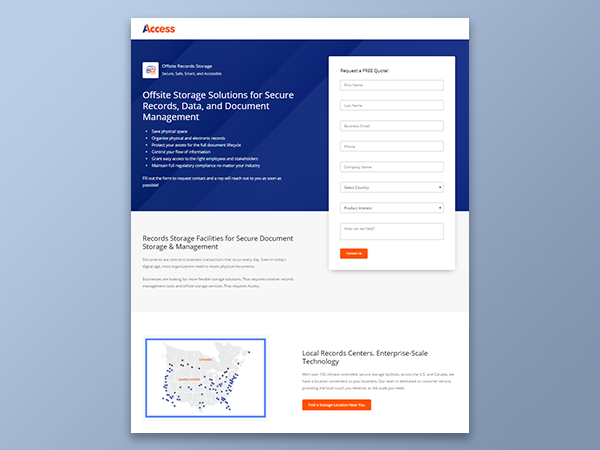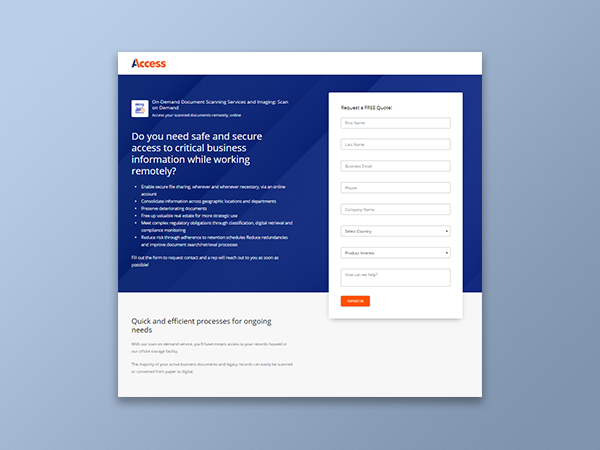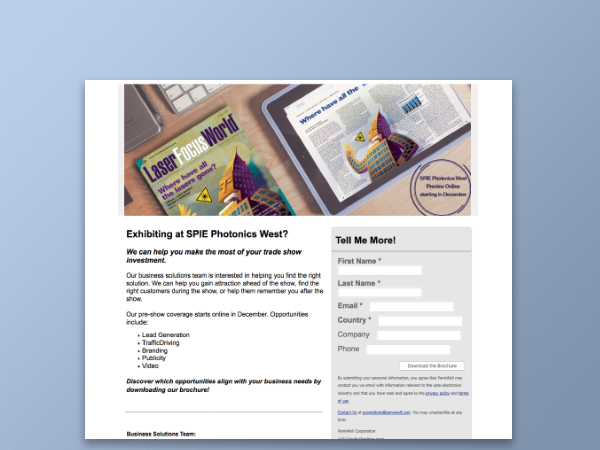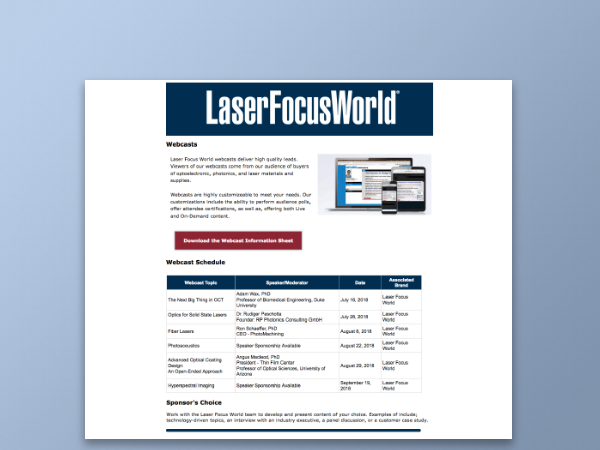Category: Websites
Sub-Category: Landing pages
Skills: Messaging / Written Content, Web Content Management, List Management / Segmentation, SEO Optimization, UX Design, Analytics / Testing
Tools: Pardot, SalesForce, Marketo, WordPress
The Home Page is Rarely the Best Page
For many B2B websites the homepage is just the beginning. Prospects and clients seeking solutions to their problems are more likely to find their answers on an interior page or via a piece of content. Understanding what your audience and developing appropriate landing pages is part of a broader digital strategy that can drive new traffic, increase time on page and develop MQLs that are ready for the sales team.
An effective landing page should always contain a clear benefit, a prominent call to action, and a form. The landing page should be viewed as a marketing resource that allows you to build a relationship and gather information. Sometimes the data collection is an obvious mechanism such as a form. Other information can also be garnered through downloadable or interactive content that demonstrate client interest via clicks and engagement. Analyzing page views versus the number of form fills tells you about the depth of interest of your audience. Information about where and how prospects found the landing page can generate new ideas for reaching your audience.
A measurable conversion goal is essential to every landing page. It should be written and design with a specified audience and purpose in mind. The headline must clearly inform the reader what they can expect in the body of the page to give them the motivation to read on. The body content should contain a variety of sentence length to make it easy and interesting to read. I also recommend including bullet points as reader often skim the content. Bullet points detailing what to expect after the form-fill will usually increase conversions.
Targeting the correct audience is equally important to the content on the page. Understanding the audience and associated topics increases the likelihood that the page will be found. Landing pages (and blogs for that matter) should contain both top-level head terms, as well long tail keywords, in a hierarchical fashion that is relevant to the topic. Research can be done on the via Google trends, looking at competitor sites and diving into your own analytics.
And finally, for recurring demand generation programs, where audience members are encouraged to participate in monthly or weekly content, give it a familiar look and style. Including branded imagery and displaying the written content in a format they are used to allows audience members to quickly assess if this episode is relevant to them. The easier it is for them to assess, the more likely they will sign-up when the time is right. This is respectful of their time and allows you to make informed assessments about the programs your produce.







